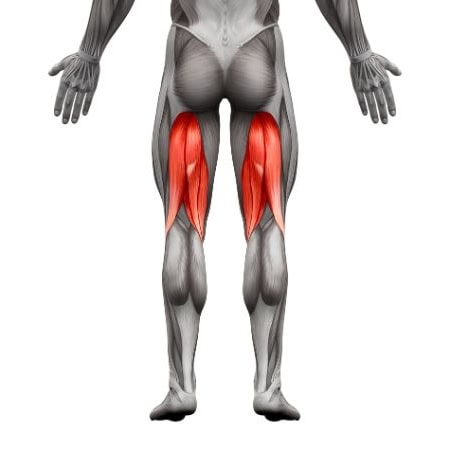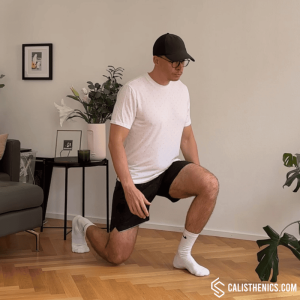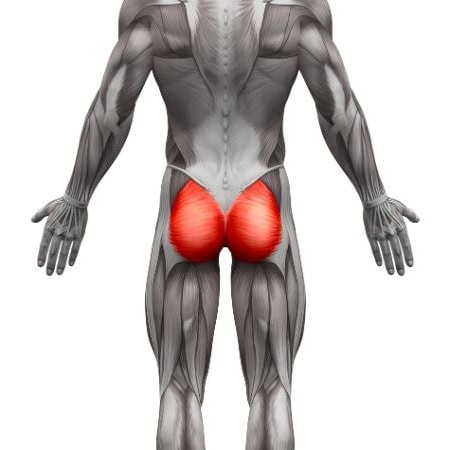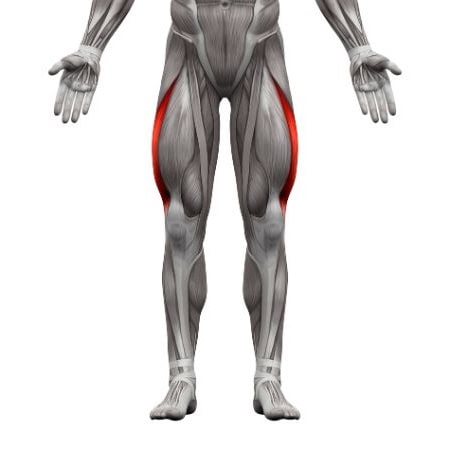Forward Lunges
How to do Forward Lunges?
Forward lunges are a foundational lower-body exercise that targets the quadriceps, hamstrings, and glutes while also improving balance, coordination, and core stability. This dynamic movement involves stepping forward into a lunge position, making it ideal for strengthening the legs and developing unilateral (single-leg) strength. Forward lunges can be performed with bodyweight or added resistance like dumbbells or kettlebells to increase difficulty.
Steps to Perform the Exercise:
- Stand Tall: Begin by standing upright with your feet hip-width apart and your hands on your hips or at your sides for balance.
- Step Forward: Take a controlled step forward with your right foot. The step should be large enough that your knee does not go past your toes when you lunge.
- Lower into a Lunge: Bend both knees to lower into a lunge position. Your front knee should be at a 90-degree angle, with the knee directly above your ankle. Your back knee should lower towards the ground but not touch it, forming a 90-degree angle as well.
- Push Back to Starting Position: Press through the heel of your front foot to push yourself back up to the starting position. Your core should remain tight and your chest lifted.
- Switch Legs: Step forward with your left leg and repeat the same movement.
- Repeat: Perform 10-12 repetitions on each leg, alternating legs with each step, and adjust reps based on your fitness level.
Tips for the proper execution of Forward Lunges
Keep Chest Up: Maintain an upright posture with your chest lifted and back straight throughout the movement to avoid straining your lower back.
Knee Alignment: Ensure your front knee stays aligned directly above your ankle and doesn’t move past your toes as you lunge. Your back knee should remain in line with your body, not collapsing inward or outward.
Controlled Movement: Step forward in a controlled manner and lower yourself slowly to protect your joints and prevent injury.
Push Through the Heel: When returning to the starting position, focus on pushing through the heel of your front foot to engage your glutes and quadriceps effectively.
Engage Core Muscles: Tighten your core throughout the movement to help stabilize your body and maintain balance.
Avoid Overstriding: Taking too large of a step can put excessive strain on your knees and make it harder to maintain proper balance.
Muscles worked when doing Forward Lunges
- Primary Muscles: Quadriceps, hamstrings, glutes.
- Secondary Muscles: Calves (gastrocnemius, soleus), core (rectus abdominis, transverse abdominis, obliques), hip flexors.
Primary Muscle(s):
Secondary Muscle(s):

Hamstring
Equipment needed for Forward Lunges
No equipment needed for this exercise.
Adjust the difficulty of Forward Lunges
How to make Forward Lunges harder?
How to make Forward Lunges easier?
How to make Forward Lunges harder?
To make Forward Lunges harder:
-
Add Weight: Hold dumbbells in each hand at your sides or place a barbell across your shoulders to add resistance and challenge your muscles further.
-
Increase Reps or Sets: Perform more repetitions or additional sets to increase the volume and intensity of your workout.
-
Slow the Tempo: Slow down the lowering (eccentric) phase of the lunge, taking 3-5 seconds to lower yourself. This increases time under tension and engages your muscles more effectively.
-
Add a Jump: For a plyometric variation, jump explosively as you push off from the lunge position, alternating legs in mid-air.
How to make Forward Lunges easier?
To make Forward Lunges easier:
-
Reduce Range of Motion: If you’re new to lunges, only lower partway into the lunge rather than going all the way down. Increase your range of motion as your strength and mobility improve.
-
Hold on to Support: Use a wall or railing for extra balance if needed. This allows you to focus on your form without worrying about stability.
-
Perform Stationary Lunges: Instead of stepping forward, keep your feet in place and perform lunges by moving straight up and down. This reduces the balance challenge but still strengthens the legs.




